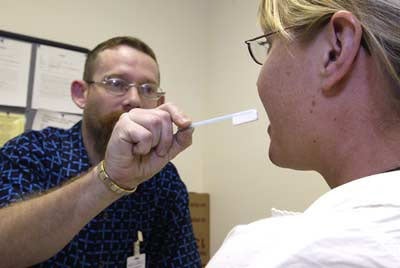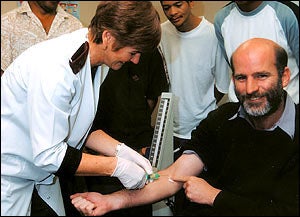There are two different types of tests, one is taking your saliva (using a tool that looks like a Q tip/ tooth brush). The second way of testing is by taking your blood.



Various blood tests now are used to detect HIV. The most frequently used test for detecting antibodies to HIV-1 is enzyme immunoassay. If it indicated the presence of antibodies, the blood is more definitively tested with the Western blot method. A test that measures directly the viral genes in the blood is helpful in assessing the efficacy of treatment.
There is no cure for AIDS. Drugs such as AZT, ddI, and 3TC have proved effective in delaying the onset of symptoms in certain subsets of infected individuals. The addition of a protease inhibitor, such as saquinovir or amprenavir, to AZT and 3TC has proved very effective, but the drug combination does not eliminate the virus from the body. A recently approved drug not in the protease inhibitor group, efavirenz (Sustiva), must be taken with protease inhibitor or older AIDS medicines. Opportunistic infections are treated with various antibiotics and antivirals, and patients with malignancies may undergo chemotherapy. These measures may prolong life or improve the quality of life, but the drugs for AIDS treatment may also produce painful or debilitating side effects. Some 30 experimental AIDS vaccine against AIDS has been slowed because HIV mutates rapidly, causing it to become unrecognizable to the immune system, and because, unlike most viruses, HIV attacks and destroys essential components of the very immune system a vaccine is designed to stimulate.
Governments and the pharmaceutical industry continue to be under pressure from AIDS activists and the public in general to find a cure for AIDS. Attempts at prevention through teaching "safe sex" (i.e., the relatively safer sex accomplished by the use of condoms), sexual abstinence in high-risk situations, and the dangers to drug users of sharing needles have been impeded by those who feel that such education gives license to promiscuity and immoral behaviors.